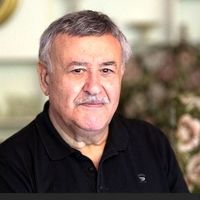
a painter and calligrapher, was 25 years old when Iran Hall Gallery, one of the earliest galleries in Iran, opened its doors in Tehran on July 6, 1964. He presented his works to the group of 12 artists that established the gallery at that time.
Karim Emami, an art critic, cited Tabrizi as a successful ceramic artist who displayed the first skin art pieces that were influenced by local art elements.
With a shared commitment to Abstract Art as opposed to Figurative Art, the artists who displayed their work in Iran Hall Gallery started working together. They created the most cutting-edge gallery of its era, with an eye on cultural and social advancements as well as the expansion of reading and visual literacy in society.
Tabrizi alternated between abstract and conventional abstraction.
He presented pieces that French art critic Michel Tapié characterized to as High Art in 1971 at an exhibition of his work at the Sirous Gallery in Paris.
Tapié used the term Informal Art to describe the work produced in Iran throughout the 1970s and utilizes it as the primary component of modern art as well as a philosophical aesthetic.
The apex of Tabrizi's career was his show in Paris. He embraced modern abstract art and responded appropriately to the aesthetic and fashion trends of the day.
Tabrizi invested his fame in the growth of Iranian abstract art throughout the 1980s. He was back in the sphere of what the people in Iran believed the society should want after his return. He skillfully sought to extend the native art in the layers of the current flow by going back to the old themes and depending on his superb skills.
It is underappreciated how much of an effect he had on modern painters as well as native artists in Coffee House Style and art assemblages like Glass Painting.

Through the arrangement and acquisition of art collections, Tabrizi demonstrated his support and strategy as a collector.
His father was a painter, and according to his own biography, he was a miniature painter. Tabrizi was familiar with the style of traditional art and how it had evolved during the lives of earlier generations. He also understood the social context in which traditional art was created and made an effort to modernize it.
He wasn't only an artist; in 1973, he established Gallery 66 in an effort to establish a center for his style of contemporary art.
So, there is a good reason why Tabrizi's artwork is currently selling for higher prices in Middle Eastern auctions. Four of his pieces were recently sold in one night at Bonhams in London.